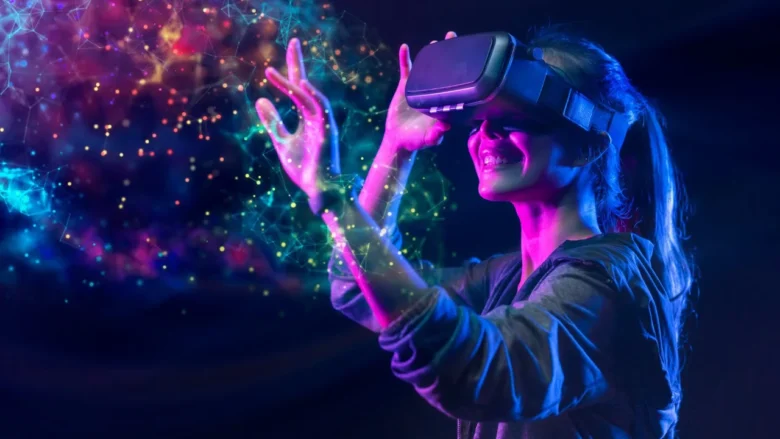Virtual and augmented reality technologies are rapidly transforming from science fiction concepts into practical tools that enhance our daily experiences. These immersive technologies are reshaping how we work, learn, shop, and interact with the world around us. As VR and AR become more accessible and affordable, they’re poised to revolutionize countless aspects of our everyday lives in ways we’re only beginning to imagine.
Introduction to VR/AR
Virtual reality creates completely immersive digital environments that transport users to alternate worlds, while augmented reality overlays digital information onto the real world through smart devices. Both technologies rely on advanced hardware and software to create immersive experiences that blur the boundaries between the physical and digital worlds.
Typically, VR necessitates the use of headsets that obscure the real world, while AR is accessible through smartphones, tablets, or specialized glasses. The fundamental difference lies in their approach: VR replaces reality entirely, while AR enhances it with digital elements. These technologies have evolved significantly since their early iterations, moving from bulky, expensive equipment used primarily in research labs to sleek consumer devices that millions of people can afford and use comfortably.
Current Applications of VR/AR
Today’s virtual and augmented reality applications span numerous sectors, demonstrating their versatility and growing importance. Gaming remains the most visible use case, with VR headsets offering unprecedented immersion in virtual worlds and AR games like Pokémon GO bringing digital creatures into real environments. Healthcare professionals use VR for surgical training and patient therapy, while AR assists surgeons with real-time guidance during operations.
Education has embraced both technologies, allowing students to take virtual field trips to ancient civilizations or visualize complex molecular structures in three dimensions. Retail companies deploy AR to let customers virtually try on clothes or visualize furniture in their homes before purchasing. Real estate agents use VR for virtual property tours, enabling potential buyers to explore homes remotely. Social media platforms increasingly integrate AR filters and effects, making these technologies part of daily communication for billions of users worldwide.
Future Trends in VR/AR
The future of VR and AR promises even more seamless integration into our daily routines through advancing hardware and software innovations. Lightweight, fashionable AR glasses will replace bulky headsets, making the technology as commonplace as smartphones today. Haptic feedback systems will add touch sensations to virtual experiences, creating more realistic interactions with digital objects. Cloud-based processing will eliminate the need for powerful local hardware, making high-quality VR and AR experiences accessible through any connected device.
Artificial intelligence will personalize these experiences, adapting virtual environments and augmented overlays to individual preferences and needs. Mixed reality environments will combine the best of both technologies, allowing seamless transitions between fully virtual and augmented experiences. Voice and gesture controls will replace traditional input methods, making interactions more natural and intuitive. These advances will enable persistent digital layers in our physical world, where virtual objects and information remain consistently placed in specific locations for all users to see and interact with.
Impact on Industries
Various industries are preparing for fundamental changes as VR and AR technologies mature and become more widespread. Manufacturing will benefit from AR-guided assembly processes and VR-based training programs that reduce errors and improve worker safety. Tourism companies will offer virtual destination previews and augmented historical information at landmarks, enhancing visitor experiences while reducing environmental impact. Healthcare will see revolutionary changes through VR therapy for mental health conditions and AR-assisted diagnostics that provide doctors with real-time patient data overlays.
Education systems will transform through immersive learning experiences that make abstract concepts tangible and engaging. Architecture and construction firms will use these technologies for virtual building walkthroughs and AR-guided construction processes. Entertainment industries will create new forms of interactive media that blend physical and virtual performances. Transportation will incorporate AR navigation systems that overlay driving directions directly onto windshields, while autonomous vehicles may offer VR entertainment during travel.
Challenges and Opportunities
Despite their promising future, VR and AR technologies confront significant challenges that necessitate their widespread adoption. Technical limitations include battery life constraints, processing power requirements, and the need for more compact hardware designs. User comfort remains a concern, as prolonged use can cause motion sickness, eye strain, and social isolation. Privacy and security issues arise from devices that constantly capture and process environmental data. High development costs and the need for specialized skills create barriers for smaller companies wanting to create VR and AR content.
However, these challenges present substantial opportunities for innovation and growth. Companies that solve comfort and usability issues will gain competitive advantages in emerging markets. The demand for VR and AR content creators, developers, and designers will create new career paths and educational programs. Standardization efforts will eventually make cross-platform experiences possible, expanding the potential user base for applications and content.
Transforming Tomorrow’s Digital Landscape
Virtual and augmented reality represent more than technological novelties—they’re fundamental shifts in how humans interact with information and each other. As these technologies continue evolving, they’ll become as essential to daily life as smartphones are today.
The convergence of improved hardware, artificial intelligence, and faster internet connectivity will make immersive experiences commonplace across work, education, entertainment, and social interaction. Success in this emerging landscape will depend on creating technologies that feel natural, provide genuine value, and respect user privacy and comfort. The organizations and individuals who embrace these changes early will shape the future of human-computer interaction for generations to come.
FAQs
1. What’s the difference between VR and AR?
VR creates completely immersive virtual environments that replace the real world, while AR overlays digital information onto the real world. VR typically requires headsets, whereas AR can work through smartphones or smart glasses.
2. How much do VR and AR devices cost?
Entry-level VR headsets start around $300, while high-end models can cost $1,000 or more. AR experiences are often available through existing smartphones, though dedicated AR glasses range from $500 to several thousand dollars.
3. What are the main barriers to VR/AR adoption?
Key challenges include high costs, limited battery life, user comfort issues like motion sickness, privacy concerns, and the need for more compelling content that justifies the investment.
4. Which industries will benefit most from VR/AR?
Healthcare, education, manufacturing, retail, real estate, and entertainment are leading adopters. However, virtually every industry will find applications as the technology becomes more accessible and affordable.
5. When will VR/AR become mainstream?
Experts predict widespread consumer adoption will occur within the next 5–10 years, as hardware becomes lighter and more affordable and software experiences become more compelling and useful for everyday tasks.




